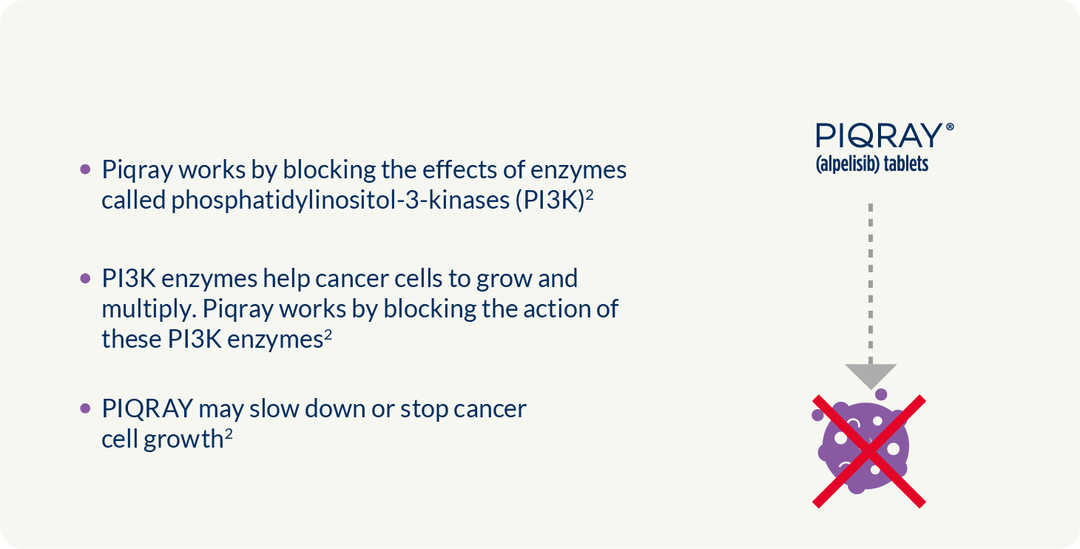
PIQRAY®▼ (alpelisib)
You have been prescribed Piqray® (alpelisib) because your doctor believes you are of a particular subset of people who could benefit from this treatment

PIQRAY®▼ (alpelisib)
Fulvestrant is a type of treatment called endocrine or hormone therapy.2 Learn more about how fulvestrant works for people with aBC

PIQRAY®▼ (alpelisib)
You are one of approximately ~30–40% of patients with a PIK3CA mutation and HR+/HER2– locally advanced or metastatic breast cancer.2,3 Find out how Piqray is believed to work for patients with this type of cancer



